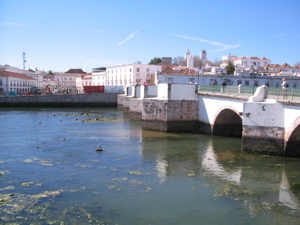 Tavira’s origins date back to the late Bronze Age (1.000-800 BC). In the 8th century BC it became one of the first Phoenician settlements in the Iberian West. The Phoenicians created a colonial urban center here with massive walls, at least two temples, two harbours and a regular urban structure. Phoenician Tavira existed until the end of 6th Century BC, when it was destroyed by conflict.
Tavira’s origins date back to the late Bronze Age (1.000-800 BC). In the 8th century BC it became one of the first Phoenician settlements in the Iberian West. The Phoenicians created a colonial urban center here with massive walls, at least two temples, two harbours and a regular urban structure. Phoenician Tavira existed until the end of 6th Century BC, when it was destroyed by conflict.
With its inviting long beaches, typical roofs and chimneys, this picturesque town offers a beautiful view over the Gilão river and its Roman bridge.
There are quite a few sights. There are for example many churches to visit: Santa Maria do Castelo (13th-18th centuries), Misericórdia (Renaissance), Nossa Senhora das Ondas (17th century), São José (with Gothic and Manueline elements), São Paulo and Carmo (17th-18th centuries).
Although the castle is considerably less exciting than those in the Alto Alentejo, the walled garden beside it is a place of considerable beauty.